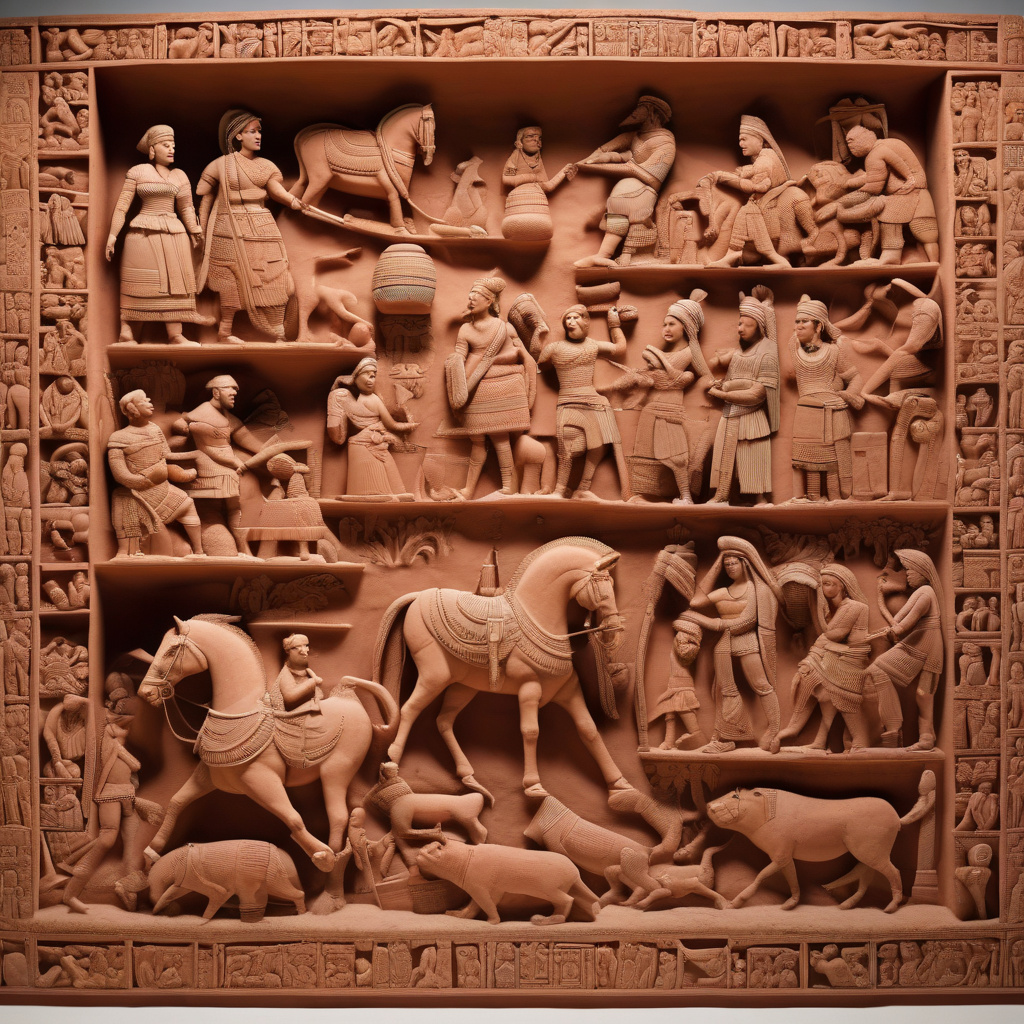Terracotta Relief Unveils Carpetania’s Unexpected Influence on Ancient Globalization
A recent discovery of a decorated terracotta relief is rewriting the history of ancient Carpetania, shedding light on its unexpected influence on early globalization. The artifact, unearthed from a remote archaeological site in the heart of Carpetania, has sparked excitement and intrigue among historians and archaeologists worldwide. This remarkable find challenges conventional beliefs about the region and its role in the interconnected ancient world.
Carpetania, an ancient civilization that once thrived in what is now modern-day Iberian Peninsula, has long been overshadowed by its more prominent neighbors. However, the intricate terracotta relief, depicting scenes of trade caravans and exotic goods, tells a different story. It suggests that Carpetania was not merely a peripheral player but a key hub in the network of ancient trade routes that crisscrossed the Mediterranean and beyond.
The artifact’s detailed craftsmanship and symbolic imagery hint at Carpetania’s active participation in early globalization. From the vibrant market scenes to the portrayal of foreign traders exchanging goods, the relief offers a glimpse into the bustling commercial activities that once animated the region. This newfound evidence challenges the traditional narrative of Carpetania as a backwater, revealing a sophisticated society engaged in far-reaching economic and cultural exchanges.
Moreover, the discovery raises intriguing questions about the extent of Carpetania’s influence on neighboring cultures and distant lands. Could this ancient civilization have played a more significant role in shaping the broader patterns of trade and cultural diffusion in the ancient world than previously thought? The terracotta relief invites further exploration and analysis, promising to unravel more secrets about Carpetania’s legacy and its connections to the wider global context.
As researchers continue to study and interpret the terracotta relief, they are also considering its implications for our understanding of ancient globalization. The artifact serves as a tangible reminder of the complex web of connections that linked disparate societies in antiquity, challenging simplistic notions of isolation and self-containment. It underscores the dynamic nature of ancient interactions and the pivotal role that lesser-known regions like Carpetania played in shaping the contours of early globalization.
In light of this groundbreaking discovery, efforts are underway to preserve and showcase the terracotta relief, ensuring that its significance is properly recognized and appreciated. Museums and cultural institutions are expressing keen interest in acquiring the artifact for public display, recognizing its potential to enrich our knowledge of ancient history and its relevance to contemporary discussions on globalization and interconnectedness.
The terracotta relief from Carpetania is a testament to the enduring power of archaeology to reveal hidden stories and challenge established narratives. It invites us to reevaluate our assumptions about the past and consider the complex networks that bound ancient societies together. As we delve deeper into the mysteries of ancient globalization, the terracotta relief stands as a poignant reminder of the rich tapestry of human experience that transcends time and space.
Carpetania’s unexpected influence on ancient globalization is a story that continues to unfold, offering new insights and perspectives on the interconnectedness of the ancient world. The terracotta relief serves as a tangible link to a forgotten chapter of history, urging us to explore further and reimagine the past in all its complexity and diversity.
ancient civilizations, globalization, archaeological discovery, trade routes, cultural exchanges












